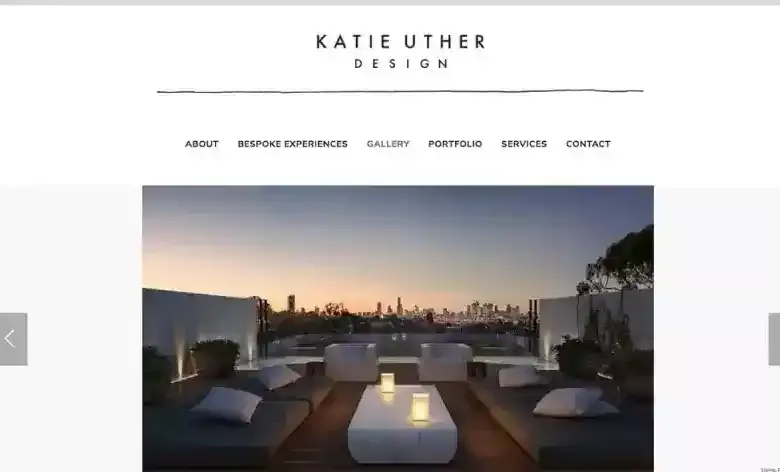Whether you’re new to the field of interior design or an experienced professional, having a portfolio is essential for attracting clients and securing jobs. In this guide, we'll provide you with valuable insights and step-by-step instructions on creating an impressive interior design portfolio that will catch the attention of employers and clients.
What is an Interior Design Portfolio and Why Do You Need One?
An interior design portfolio serves as a visual representation of an interior designer’s past and ongoing projects, as well as a record of their training, qualifications, and experience. It allows potential employers and clients to assess your skills, creativity, and suitability for specific projects or positions. A well-crafted portfolio can be sent with job applications, freelance project bids, student applications, or work inquiries, significantly increasing your chances of success in the competitive interior design market.
 Caption: An inspiring interior design project
Caption: An inspiring interior design project
What Should You Include in Your Interior Design Portfolio?
To showcase your work effectively, your interior design portfolio should include the following sections:
About Section
The About section introduces you as an interior design professional. Include a brief paragraph about your inspiration, how you started in interior design, and your favorite projects. Use illustrations or photographs to break up the text and keep it concise. Highlight your strengths, personal values, and the benefits of working with you.
Individual Projects
Your project pages should showcase your talent, experience, and passion. Include a project title, brief description, high-resolution images, before and after photos, project goals, client brief, your responsibilities, challenges faced, work process, sketches, and design boards. Include links to ideas that inspired you and mood boards. Tell a story that guides the reader through the project journey.
Resume
The Resume page should highlight your work experience, education, achievements, and skills. Pay attention to the aesthetic detail of this page and create an eye-catching layout. Include a 'career highlights' section to showcase your proudest accomplishments.
Contact Details and Socials
Ensure your contact details are prominently displayed. You can include a dedicated Contact page or include this information on every page. Make it easy for potential employers and clients to reach out to you by including your social media handles.
Optional Sections
Consider including a blog to demonstrate your passion for interior design and improve search engine visibility. Write articles on industry trends and commonly asked questions. You may also add a client testimonials page and a services page to provide more information about what you can offer.
 Caption: Colour samples for paint and materials
Caption: Colour samples for paint and materials
How to Create an Interior Design Portfolio: Step by Step
Follow these steps to create an impressive interior design portfolio:
Build Your Portfolio Website
Create a digital portal for your portfolio using a website-building tool. Include pages for About, Projects, Resume, and Contact. Choose a template and color scheme that reflects your style.
Write Your About Page
Write an engaging introduction to yourself as an interior design professional. Share your experience, qualifications, and inspiration. Keep it authentic, professional, and inviting. Incorporate links to your social media pages.
Select and Add Your Interior Design Projects
Choose your best projects that demonstrate your skills and experience. Each project page should have a brief intro, project goals, process description, results, and stunning images. Tell a compelling story for each project.
Add Your Resume
Ensure your resume is optimized for aesthetics and contains relevant information. Highlight achievements and use color and symbols for readability. Double-check for errors and inconsistencies.
QA Test, Publish, and Share
Thoroughly review your portfolio and ensure everything is as intended. Test on different devices. Publish your website and share it on social media, particularly on LinkedIn to increase visibility.
 Caption: Interior decorators discussing project details
Caption: Interior decorators discussing project details
Interior Design Portfolio Best Practices
Follow these best practices to create an outstanding interior design portfolio:
Only Include Your Best Projects
Select your most successful and impressive projects for your portfolio. Highlight academic and professional achievements, and use high-quality visuals to support the text. Quality matters more than quantity.
Demonstrate Your Process
Include your creative process to showcase your professionalism and transparency. Outline project requirements, include sketches, floor plans, and color schemes, and demonstrate the final results. Highlight any challenges and how you overcame them.
Use CGI Renders or Professional Photos
Utilize high-quality professional photographs or CGI renders of your work. These polished visuals enhance the viewer's understanding of your designs.
Let the Visuals Speak for Themselves
Avoid lengthy texts and let your visuals take center stage. Use impactful and concise text to support the images and tell a story. Utilize bullet points and short paragraphs.
Don't Be Afraid to Utilize White Space
White space creates a clean and focused design. It guides the viewer's attention to the desired elements and prevents overwhelm. Use white space effectively to enhance user experience.
Choose a Theme
Select a theme that reflects your style and complements your work. Maintain authenticity and consistency in your messaging and style to establish a recognizable brand.
Elevate Your Designs with Typography
Choose appropriate typography to enhance the visual hierarchy, elevate visuals, and improve the flow of your website. Select fonts that reflect your style, avoid using too many fonts, and ensure readability.
Update Your Portfolio Regularly
Regularly update your portfolio to demonstrate growth, commitment, and passion. Include new work, training certificates, or passion projects. Write blog articles to discuss industry trends and improve visibility.
Utilize Different Formats
Create both physical and digital copies of your portfolio. A digital portfolio allows easy access and sharing, while a physical portfolio is impactful for one-to-one meetings. Ensure your digital portfolio is optimized for various devices.
Interior Design Portfolio Examples
Seek inspiration from these outstanding interior design portfolios:
-
Sara Zofko: Sara's website is image-led, showcasing stunning interior design examples. The portfolio is organized by different styles, highlighting versatility. The About page expresses her experience and humor.
-
Katie Uther Design: Katie's portfolio tells a story of her experiences in different locations. She includes a design process page and uses white space to draw attention to her work. The Services page outlines what she offers as an interior designer and decorator.
-
Emma Kay: Emma's website features a scrolling gallery of beautiful interiors, capturing attention immediately. Social media handles are easily accessible, and her portfolio is categorized by project type. She lets the images speak for themselves.
Conclusion
Crafting an impressive interior design portfolio is crucial for career success. Follow the steps and best practices outlined in this guide to create a portfolio that showcases your skills, talent, and style. Don't forget to regularly update your portfolio and seek inspiration from successful examples. Good luck with your interior design journey!
For more guidance and professional support in interior design, consider exploring AND's Interior Design Certificates and Diplomas. Check out our blog for more articles on interior design and career opportunities in the field.
In case you need further assistance, here are some resources to consider:
- Watch a session by Snehanshu Mukherjee, Founding Partner at T.E.A.M, and Mansi Almadi, an Interior Designer at Studio Lotus.
- Talk to a course advisor to discuss how you can transform your career with our interior design courses.
- Browse our Interior Design courses taught by industry experts through live, interactive classes.
- Explore scholarship and funding options to overcome financial obstacles in pursuing your career transformation.
Note: All information and data from external sources are believed to be accurate as of the date of publication.









